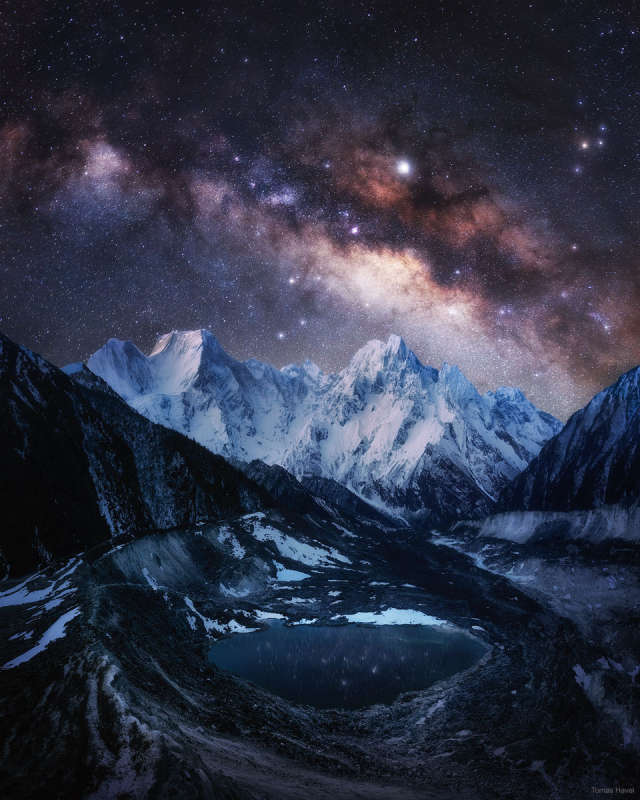
|
Explanation: What┴s higher than the Himalayas? Although the Himalayan Mountains are the tallest on planet Earth, they don't measure up to the Milky Way. Visible above the snow-capped mountains in the featured image is the arcing central band of our home galaxy. The bright spot just above the central plane is the planet Jupiter, while the brightest orange spot on the upper right is the star Antares. The astrophotographer braved below-zero temperatures at nearly 4,000-meters altitude to take the photographs that compose this image. The featured picture is a composite of eight exposures taken with same camera and from the same location over three hours, just after sunset, in 2019 April, from near Bimtang Lake in Nepal. Over much of planet Earth, the planets Mercury (faint) and Venus (bright) will be visible this week after sunset.
Experts Debate:
How will humanity first discover
extraterrestrial life?
|
January February March April May June July August September October November December |
| ||||||||||||||||||||||||||||||||||||||||||||||||
NASA Web Site Statements, Warnings, and Disclaimers
NASA Official: Jay Norris. Specific rights apply.
A service of: LHEA at NASA / GSFC
& Michigan Tech. U.
Based on Astronomy Picture
Of the Day
Publications with keywords: Milky Way
Publications with words: Milky Way
See also:
- APOD: 2025 July 2 ┴ Milky Way Through Otago Spires
- APOD: 2025 May 20 ┴ Milky Way over Maunakea
- APOD: 2025 May 13 ┴ Gaia Reconstructs a Top View of our Galaxy
- APOD: 2025 May 12 ┴ Gaia Reconstructs a Side View of our Galaxy
- Galaxies in Space
- APOD: 2025 February 9 ┴ Milky Way over the Australian Pinnacles
- APOD: 2024 November 24 ┴ Journey to the Center of the Galaxy
